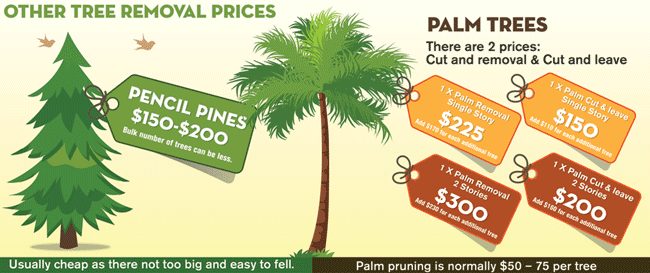Be On The Lookout For Crucial Signs That Suggest Your Tree Could Position A Danger; Understanding These Can Safeguard Your Home And Family.What Should You Keep An Eye On Next?
Be On The Lookout For Crucial Signs That Suggest Your Tree Could Position A Danger; Understanding These Can Safeguard Your Home And Family.What Should You Keep An Eye On Next?
Blog Article
Content Written By-Reid Enemark
When it pertains to tree treatment, acknowledging the indicators that it's time for elimination is important for your security and building. You may discover stained fallen leaves, wilting branches, or odd fungal developments indicating illness. Structural concerns, like a significant lean or cracks in the trunk, can likewise position threats. Understanding these indication can assist you make educated choices concerning your trees and prevent prospective hazards hiding in your backyard. What should you search for next?
Indications of Degeneration and Illness
When you observe indications of degeneration and condition in your trees, it's important to act promptly. Search for tarnished fallen leaves, wilting branches, or unusual developments like fungus. These can show that your tree is battling.
If you see fractures in the bark or soft, mushy timber, these symptoms recommend internal degeneration. Furthermore, an unexpected increase in bugs around your tree can signify that it's weakened and vulnerable.
Look for any type of dead or passing away arm or legs, as they position a threat to your residential property and security. If you're uncertain concerning what you see, seeking advice from an arborist can provide clarity.
Attending to these indications early can save you from extra extensive damage and make certain the health of your yard. Don't wait until it's far too late.
Structural Instability and Leaning
As you observe your trees, keep an eye out for any indications of architectural instability or leaning. If a tree leans significantly, it might show that the origin system is endangered.
Search for any kind of fractures in the trunk or soil around the base; these can indicate prospective failing. In https://best-way-to-remove-a-tree17384.develop-blog.com/42449040/tree-removal-safety-and-security-standards-key-points-to-understand-before-beginning , check for uncommon growth patterns, like an unbalanced crown, which might suggest that the tree is having a hard time to hold itself upright.
If you discover that the tree favors your home, power lines, or various other frameworks, it positions a better risk. Don't ignore these indicators-- seek advice from an arborist to assess the circumstance.
Doing something about it early can prevent costly damage and guarantee your safety and security.
Dead or Dying Branches and Vegetation
If you discover dead or passing away branches and foliage on your tree, it's a clear indicator that something's wrong.
https://www.bobvila.com/articles/2213-landscaping-ideas/ can indicate underlying problems like disease, bug problems, or environmental stress. When branches lose their leaves or transform brown, they're no longer contributing to the tree's health and wellness. Overlooking these signs can lead to further decrease, making your tree more unsafe.
Dead branches can conveniently break short throughout tornados, presenting a risk to property and people nearby. It's important to examine the extent of the damages.
If the issue influences a substantial part of the tree, think about speaking with a specialist. They can aid determine if removal is necessary to make certain safety and security and preserve the beauty of your landscape.
Final thought
If you see any signs of decay, structural instability, or dead branches on your trees, don't disregard them. These indicators can present severe security threats to you and your building. It's constantly best to get in touch with a professional arborist who can give a professional evaluation of your trees. Doing something about it early can prevent mishaps and expensive damages, ensuring your landscape stays safe and healthy and balanced. Bear in mind, it's far better to be proactive concerning tree treatment than to await a calamity to take place.
